
The Rubber Board is a statutory body constituted by the Government of India, under the Rubber Act 1947, for the overall development of the rubber industry in the country.

The Rubber Board is a statutory body constituted by the Government of India, under the Rubber Act 1947, for the overall development of the rubber industry in the country.
Commercial cultivation of natural rubber was introduced in India by the British, although the experimental efforts to grow rubber on a commercial scale in India were initiated as early as 1873 at the Botanical Gardens, Calcutta. The first commercial Hevea plantations in India were established at Thattekadu in 1902. The importance of rubber production in India for strategic and security reasons had been realised by the government during the Second World War period. The rubber growers in India were encouraged to produce the maximum rubber required for the use during war. After the war, there were growing demands from the growers for setting up a permanent organisation to look after the interests of the industry. Thereupon the government set up an ad hoc committee in 1945 to study the situation and to make appropriate recommendation. On the recommendation of this ad hoc committee, the government passed the Rubber (Production and Marketing) Act, 1947, on 18 April 1947, and the Indian Rubber Board was constituted forthwith. The Rubber Production and Marketing (Amendment) Act, 1954, amended the name of the Board as The Rubber Board
As noted above, a consideration of the post war natural rubber scenario prompted the Government of India to pass the Rubber (Production and Marketing) Act, 1947 to provide for the overall promotion and development of the sector under its guidance and control. As envisaged in the Act, the Indian Rubber Board was set up as the statutory organization responsible for assisting the government in implementation of the various provisions of the Act. The Act which came into force on 18 April 1947 has since undergone many amendments. The Rubber production and Marketing (Amendment) Act of 1954 which took effect on 1 August 1954 made some important changes in the constitution of the Board now renamed as The Rubber Board. It clearly defined the role of the Board in the development of the industry and in formulating and implementing necessary research and development programmes. This was followed by notification of the Rubber Rules, 1955 laying down guidelines for the Board to follow in carrying out the purposes of the Act. The Rules have been subjected to need based amendments from time to time. The Rubber (Amendment) Act of 1960 made certain alterations in the rate and procedure of collection of cess on rubber. The Rubber (Amendment) Act of 1982 provided for the Central Government to appoint a part-time or whole time Chairman for the Board and, if necessary, an Executive Director for exercising such powers and performing such duties as may be prescribed or delegated to him by the Chairman. The 1994 Amendment refixed the maximum rate of cess that can be levied on rubber.
The functions of the Board as defined under the Act are:

There are 9 departments and 4 divisions in the Rubber Board of India.
The nine departments are;
The four divisions are;
Sub Topics
Divisions Publicity & Public Relations Division and Vigilance Division
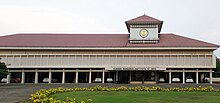
The Rubber Research Institute of India (RRII) established in 1955 is located on a hillock in the eastern suburb of Puthuppally, Kottayam, eight kilometres from the town. There are nine research disciplines, seven Regional Research Stations, two Hevean Breeding Sub-stations and a Central Experimental Station attached to the RRII. The Institute is headed by the Director (Research).
Major Divisions
The Department headed by the Rubber Production Commissioner is responsible for planning, formulation and implementation of schemes for improvement and expansion of rubber cultivation and production. Extension/advisory service, supplies of inputs, demonstration and training for small growers etc. are also undertaken by the RP Department. There is a well structured field establishment set up under the Rubber Production Department which renders free advisory and extension services to rubber growers on all aspects of rubber cultivation, production, processing and marketing and simultaneously attends to implementation of various development schemes as well. The set up comprises four Zonal Offices, 44 Regional Offices and 191 Field Offices located at all important rubber growing centers. The Rubber Production Department formulates and implements all schemes relating to cultivation and production, most schemes relating to processing and the schemes for promoting and assisting small holders’ self-help groups. [1]
The development strategy for natural rubber production has to keep in view the following essential requirements: • Optimisation of production from existing plantations through replanting with improved cultivars and better agro management • Expansion of cultivation in traditional plantation areas, identification of suitable non-traditional areas that are fit for economic production and extension of cultivation to such areas • Reduction of cost of production to withstand challenges from competing crops, synthetic substitutes and cheap imports • Upgradation of quality of produce to meet the increasingly exacting demands of consuming industries • Formation and effective working of small holders’ self-help groups to ensure informed community participation to create infrastructure to facilitate organised production, processing and marketing chains to gain maximum returns. The approach also takes care of the needs of the resource poor farmers who also got an opportunity not only to derive benefits offered under various schemes but to contribute to the decision making process. [2]
The important development schemes and activities undertaken through the Department are the following:
The central office of the Department functions at the Board's central office in Kottayam. The field services are rendered through Zonal/Regional offices and Field Offices. Other establishments are nurseries, demonstration and training centers and tappers training schools.
India is maintaining close associations with several international organizations connected with rubber. The important organizations are: IRSG, ANRPC and IRRDB

Kottayam is one of 14 districts in the Indian state of Kerala. Kottayam district comprises six municipal towns: Kottayam, Changanassery, Pala, Erattupetta, Ettumanoor, and Vaikom. It is the only district in Kerala that neither borders the Arabian Sea nor any other states.
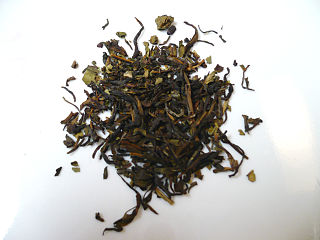
Nilgiri tea is a drink made by infusing leaves of Camellia sinensis that is grown and processed in the Nilgiris district in Tamil Nadu, India. The leaves are processed as black tea, though some estates have expanded their product offerings to include leaves suitable for making green, white and oolong teas. It is generally described as being a brisk, fragrant and full-bodied tea. The region produces both rolled and crush, tear, curl tea and it is predominantly used for blending. Nilgiri tea is also used for making iced tea and instant tea.
The Agricultural Marketing Service (AMS) is an agency of the United States Department of Agriculture; it maintains programs in five commodity areas: cotton and tobacco; dairy; fruit and vegetable; livestock and seed; and poultry. These programs provide testing, standardization, grading and market news services for those commodities, and oversee marketing agreements and orders, administer research and promotion programs, and purchase commodities for federal food programs. The AMS enforces certain federal laws such as the Perishable Agricultural Commodities Act and the Federal Seed Act. The AMS budget is $1.2 billion. It is headquartered in the Jamie L. Whitten Building in Washington, D.C.
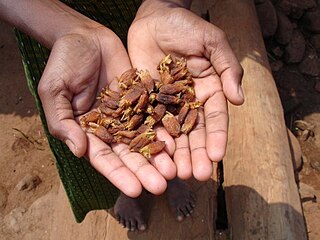
Forest produce is defined under section 2(4) of the Indian Forest Act, 1927. Its legal definition includes timber, charcoal, caoutchouc, catechu, wood-oil, resin, natural varnish, bark, lac, myrobalans, mahua flowers, trees and leaves, flowers and fruit, plants, wild animals, skins, tusks, horns, bones, cocoons, silk, honey, wax, other parts or produce of animals, and also includes peat, surface soil, rocks and minerals etc. when found inside or brought from a forest, among other things.

The Malaysian Palm Oil Board, abbreviated MPOB, is a government agency responsible for the promotion and development of the palm oil industry in Malaysia. It is one of the agencies under the Ministry of Plantation Industries and Commodities.
AHDB Potatoes, previously known as the Potato Council, is a trade organisation that aims to develop and promote the potato industry in Great Britain. Previously an independent non-departmental public body, it has been a division of the Agriculture and Horticulture Development Board since 1 April 2008.
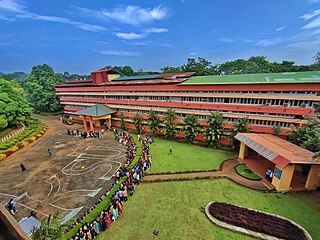
The College of Agriculture Vellanikkara, is the main campus and the premier college of Kerala Agricultural University, situated in Thrissur of Kerala state in India. The College of Agriculture imparts agricultural education at undergraduate, graduate and doctoral levels. The college has 21 departments, 11 All India Coordinated Research Projects and 11 centres undertaking the multiple activities of teaching, research and extension. The college is located in the picturesque of Kerala Agricultural University where the college and its departments itself spans the central campus in Vellanikkara, Thrissur. The college received Sardar Patel Outstanding Institution Award more than 10 times consecutively which is awarded by the Indian Council of Agricultural Research, for the institution's efficiency in contributing most number of Top ranks in JRF and SRF All India Entrance Examinations. The IPR cell under this college plays a pivotal role in establishing and promoting the Intellectual rights for products and services of the state and has secured the recognition of being the India's leading government institute for bagging most Geographical Indication tags. Agri Business Incubator functioning under the college is one of the prosperous and promising avenue for rising entrepreneurs of the state. The college was the first college to be awarded 'The Best College Award' by Kerala Agricultural University. College of Agriculture Vellanikkara is the only college under the university to win the intercollegiate Golden Lady Arts Trophy consecutively for about a decade. Dr. Mani Chellappan. Professor and Head, Department of Agricultural Entomology, CoA Vellanikkara, is the current Dean of the college

The Ministry of Petroleum and Natural Gas (MOP&NG) is a ministry of the government of India responsible for the exploration, production, refining, distribution, marketing, import, export, and conservation of petroleum, natural gas, petroleum products, and liquefied natural gas in the country. The ministry is headed by the Cabinet Minister Hardeep Singh Puri. M. M. Kutty is the Secretary of the Ministry. Dharmedndra Pradhan serving as the minister from 26 May 2014 to 7 July 2021 is the longest serving minister till date.
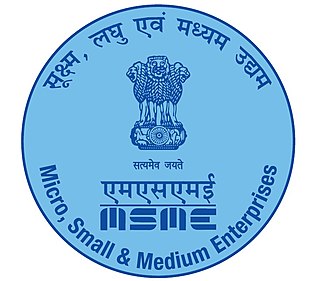
The Ministry of Micro, Small and Medium Enterprises is the ministry in the Government of India. It is the apex executive body for the formulation and administration of rules, regulations and laws relating to micro, small and medium enterprises in India. The Minister of Micro, Small and Medium Enterprises is Narayan Rane.
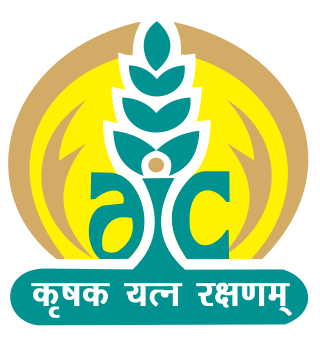
Agriculture Insurance Company of India Limited (AIC) is an Indian central public sector undertaking under the ownership of Ministry of Finance, Government of India. It is a government-owned-agricultural insurer headquartered in New Delhi. It is under the ownership of Government of India and administrative control of the Ministry of Finance of India. It offers yield-based and weather-based crop insurance programs in almost 500 districts of India. It covers almost 20 million farmers, making it the biggest crop insurer in the world in number of farmers served.

Coffee production in India is dominated in the hill tracts of South Indian states, with Karnataka accounting for 71%, followed by Kerala with 21% and Tamil Nadu. Indian coffee is said to be the finest coffee grown in the shade rather than direct sunlight anywhere in the world. There are about 250,000 coffee growers in the country; 98% of them are small growers. As of 2009, Indian coffee made up just 4.5% of the global production. Almost 80% of Indian coffee is exported; 70% is bound for Germany, Russia, Spain, Belgium, Slovenia, United States, United Kingdom, Japan, Greece, Netherlands and France. Italy accounts for 29% of the exports. Most of the export is shipped through the Suez Canal.

The Bureau of Indian Standards (BIS) is the National Standards Body of India under Department of Consumer affairs, Ministry of Consumer Affairs, Food & Public Distribution, Government of India. It is established by the Bureau of Indian Standards Act, 2016 which came into effect on 12 October 2017. The Minister in charge of the Ministry or Department having administrative control of the BIS is the ex-officio President of the BIS. BIS has 500 plus scientific officers working as Certification Officers, Member secretaries of technical committees and lab OIC's.

Coffee production in Papua New Guinea is the country's second largest agricultural export, after oil palm, and employs approximately 2.5 million people. It accounts for approximately 1% of world production, according to the United Nations Conference on Trade and Development (UNCTAD).
The Indian Trade Service (ITdS) is a civil service under Group A of the Central Civil Services of the executive branch of the Government of India. It was created as a specialized cadre to handle India's international trade & commerce on the basis of the recommendations of the Mathur Committee in 1965. At present Directorate General of Foreign Trade (DGFT), under Ministry of Commerce, is the cadre controlling authority of the ITS. DGFT has 38 regional offices across India, and plays a significant role in promoting India's international trade with its policy formulation and implementation.

Kizhakkayil Mathai Chandy was an Indian politician who served as the governor of the Indian states of Gujarat, Madhya Pradesh and the Union Territory of Pondicherry. He was also the former president of Kerala Pradesh Congress Committee (KPCC) and chairman of Rubber Board.
The Seychelles Tourism Board (STB), a public/private sector body headed by CEO Mrs. Sherin Francis, with Mrs. Kathleen Mason as Chairperson, oversees most aspects of Seychelles' tourism industry whose Minister is Mr. Didier Dogley. The Seychelles Tourism Board is responsible for the promotion and marketing of the Seychelles islands as the preferred tourist destination.

Palm oil production is vital for the economy of Malaysia, which is the world's second- largest producer of the commodity after Indonesia. The Malaysian Palm Oil Board (MPOB) is a government agency responsible for the promotion and development of the palm oil sector in the country. The country's palm oil industry produces about 90 million tonnes of lignocellulosic biomass, including empty fruit bunches, oil palm trunks, and oil palm fronds, as well as palm oil mill effluent (POME). In 2010, in response to concerns about social and environmental impact of palm oil, the Malaysian Government pledged to limit palm oil plantation expansion by retaining at least half of the nation's land as forest cover.
The Rubber Plantation Certification Scheme is a scheme run by the Rubber Board, a statutory body under the Ministry of Commerce and Industry, Government of India, for granting certificates to the owners of rubber plantations showing all details of the rubber plantation. Certification of rubber plantations is a voluntary certification procedure launched by The Rubber Board in 2014.